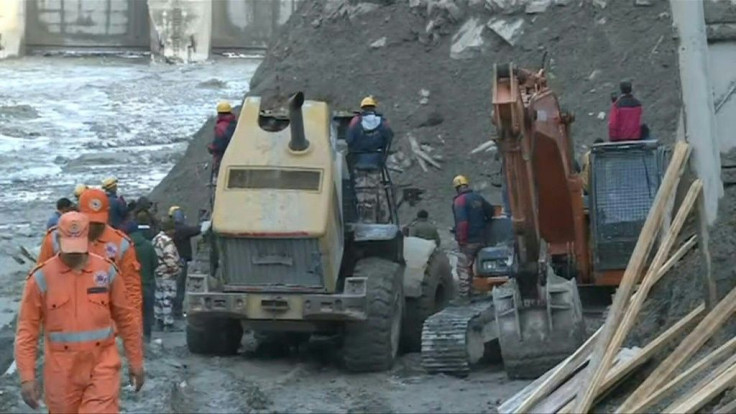Operation Hat: The CIA 'Link' To The Himalayan Glacier Burst And Flash Floods
KEY POINTS
- Operation Hat was a joint operation carried out by CIA and Indian intel agencies
- CIA lost a nuclear-powered listening device on Nanda Devi's snowy slopes
- A piece of a glacier broke off in the Himalayas Sunday causing flash floods
- The floods smashed through a hydroelectric power plant
Amid the worries that the flash floods in India's Himalayan border regions with China could be the result of a sabotage operation, local villagers have raised concerns that a long-lost nuclear-powered spy device could be to blame.
What many do not know is that the CIA had played a role in getting that device up in the snowy Himalayan heights.
The story dates back to 1964, soon after China tested its first nuclear bomb. The CIA, in cooperation with the Indian government, wanted to eavesdrop on the Chinese nuclear program in the Xinjiang province. The same province is now in the headlines because of the Chinese repression of its Muslim population. The effort was codenamed Operation Hat.
The details in this article are drawn from several public sources as the story was widely reported after American magazine Outside first broke the news on Operation Hat.
A select group of crack U.S. and Indian climbers along with a squad of porters scaled the south face of the Nanda Devi, the highest peak in India and the 23rd highest in the world. The monitoring station was carried in a disassembled form, and it was to be powered by a SNAP power pack, or Space Nuclear Auxiliary Power-generator. The SNAP station, originally developed for the U.S. space program, was to contain between one and eight pounds of plutonium and power the station when it was left alone on the mountain slope.
Severe weather conditions forced the expedition to be called off while still some 2,000 feet away from the Nanda Devi's summit. They left the monitoring station and the nuclear power pack in the snow, hoping to return and set it up.
But when they came back the next year, they realized the spy station -- and the power pack -- was swept away by an avalanche and nowhere to be found. There was no way to find the device under the mountain of snow.
The Nanda Devi's slopes were one of the sources for the Ganges river, a river considered sacred by the Hindus. The fear was that the weight of the snow could crush the device and contaminate the Ganges waters. The CIA drew up a plan to hose away the snow and rubble to retrieve the nuclear device -- except that the mound created by the avalanche was almost as big as the Giza pyramid.
The CIA and the Indian government tried for two years to retrieve it, and eventually abandoned the effort after tests found that there was no contamination of the Ganges waters.
As for the objective of the expedition itself, a second SNAP-powered monitoring station was deployed, and later retrieved, from the nearby Nanda Kot mountain.
In 1977, the then Indian Prime Minister Morarji Desai admitted to the Indian Parliament about the mission of the lost plutonium device.
Even if the SNAP device is not crushed by the weight of the ice, the fear remains that it will corrode over time and release the plutonium. But the SNAP device is only a radioactive power source, not a bomb with a detonator attached, so the theory that it might have exploded to cause the glacier to burst as the Indian villagers think, may not be true.

© Copyright IBTimes 2024. All rights reserved.





















